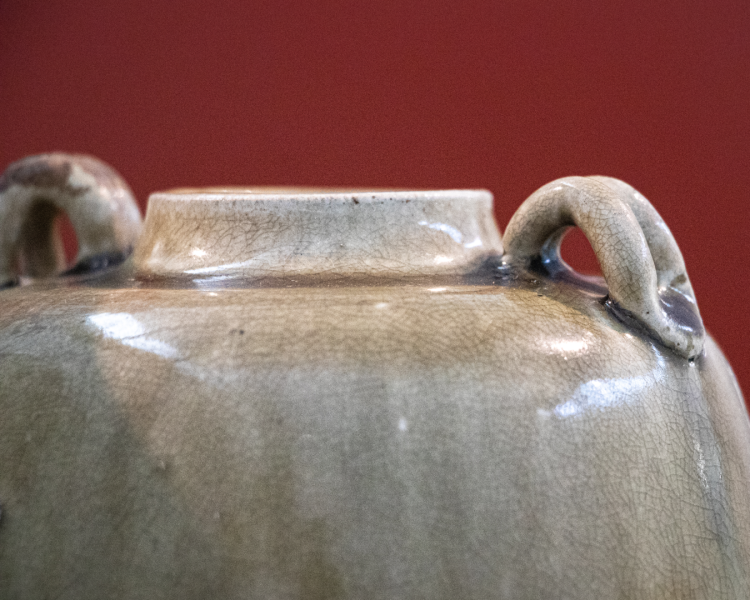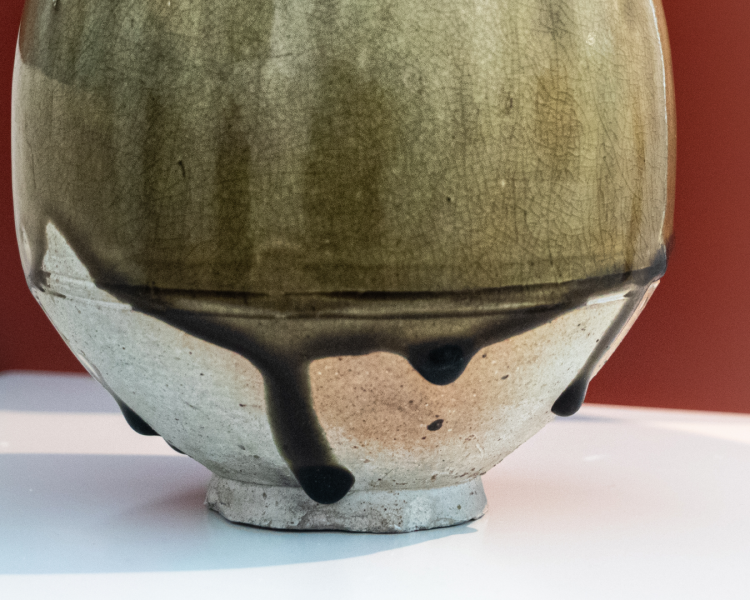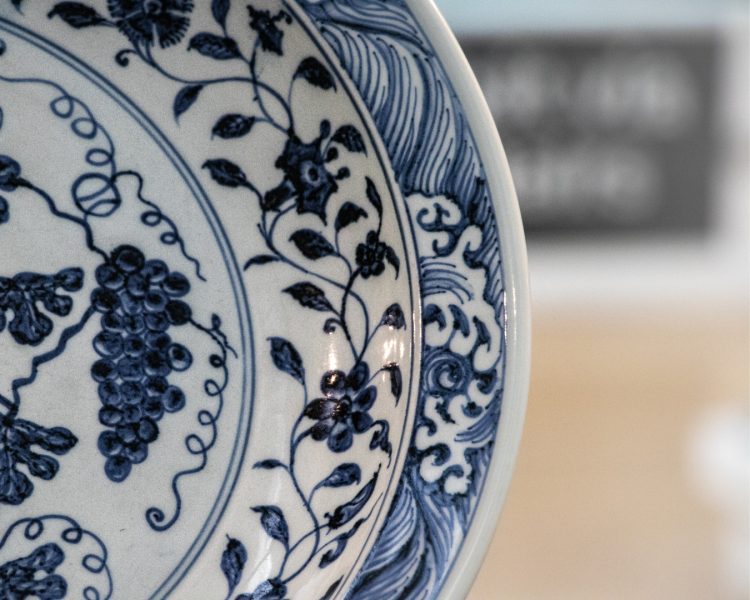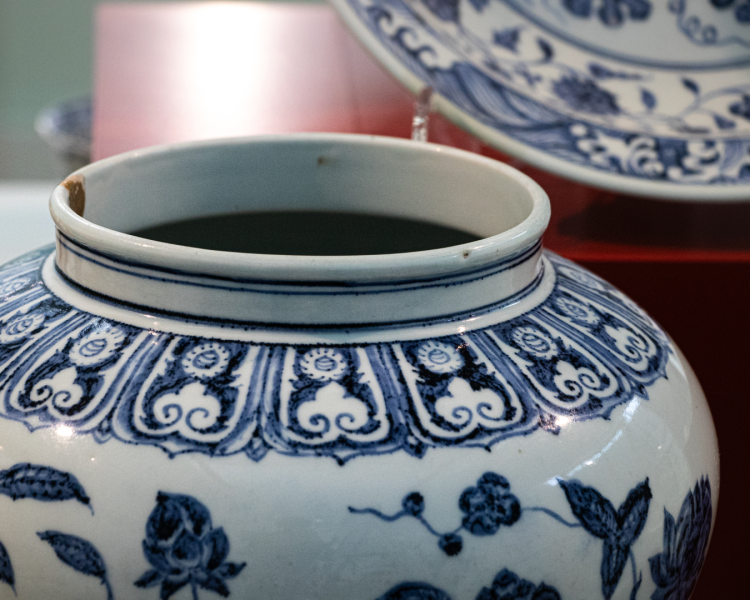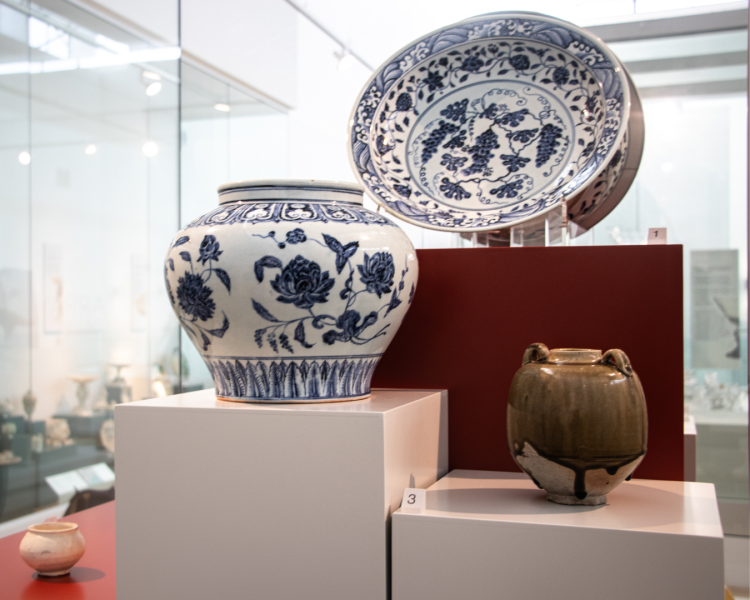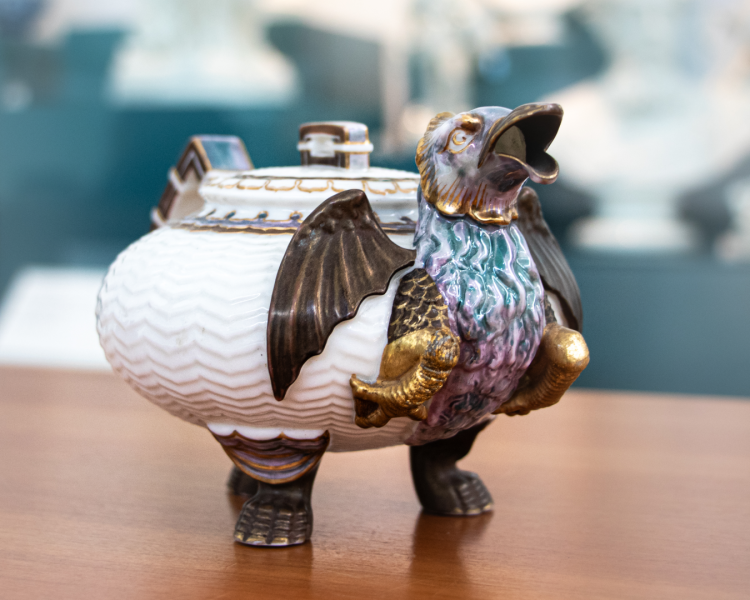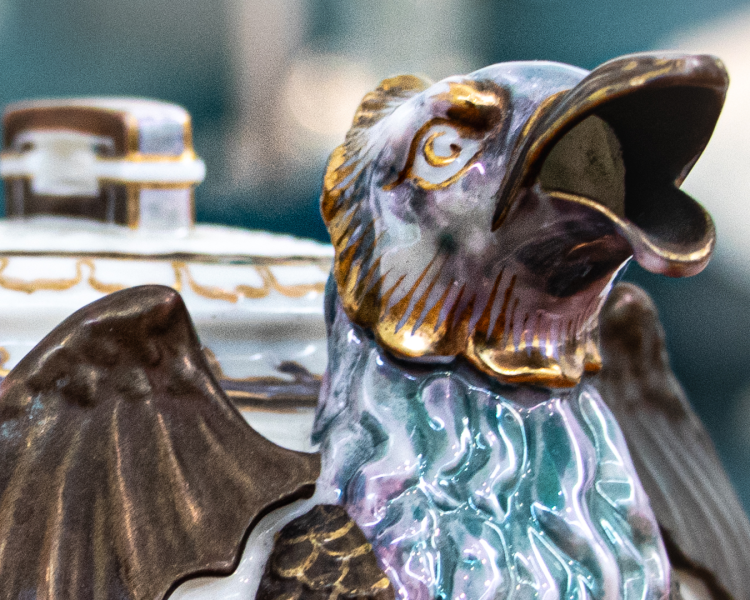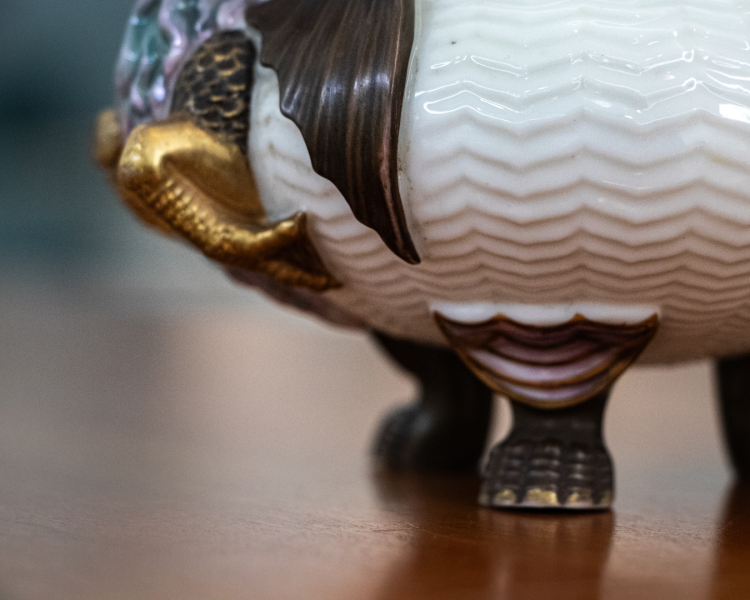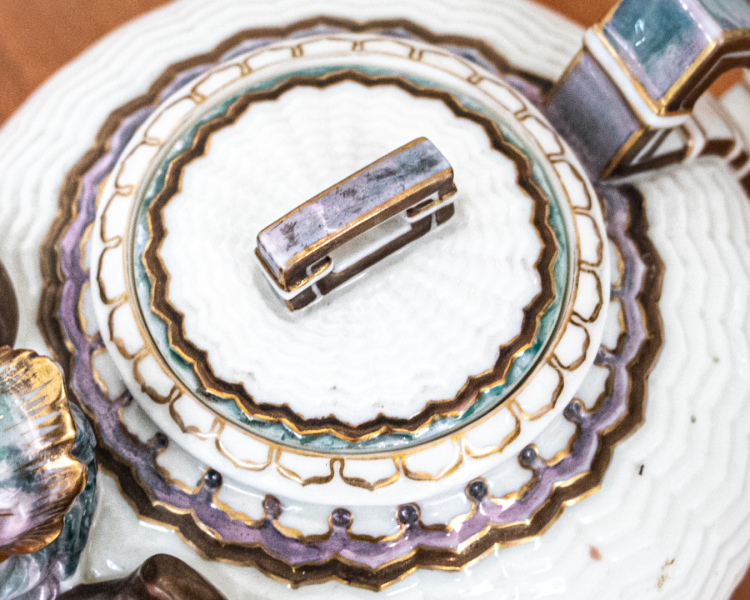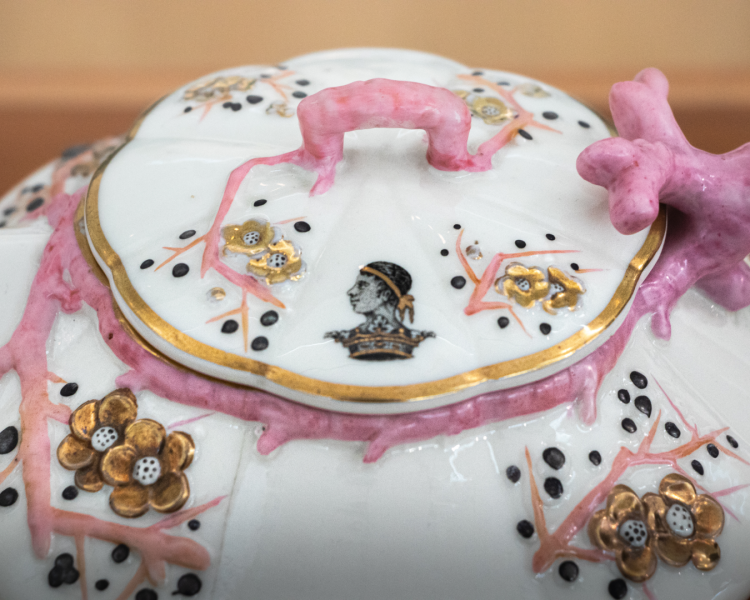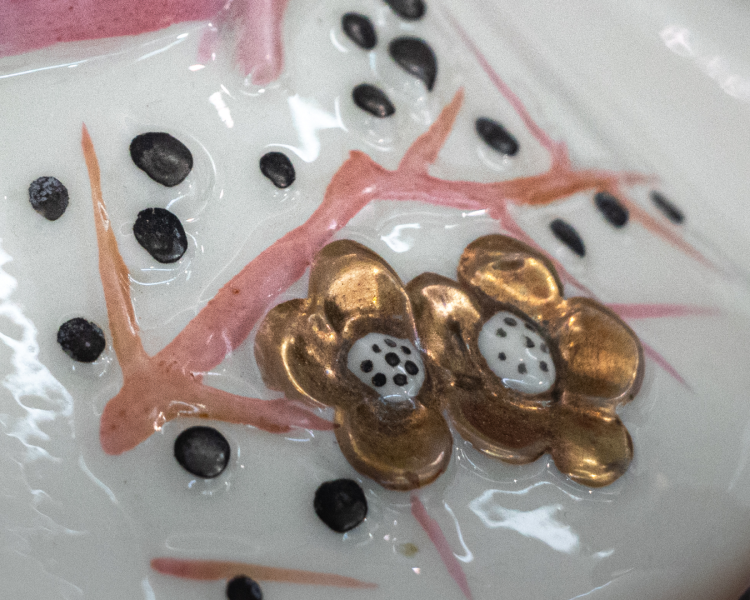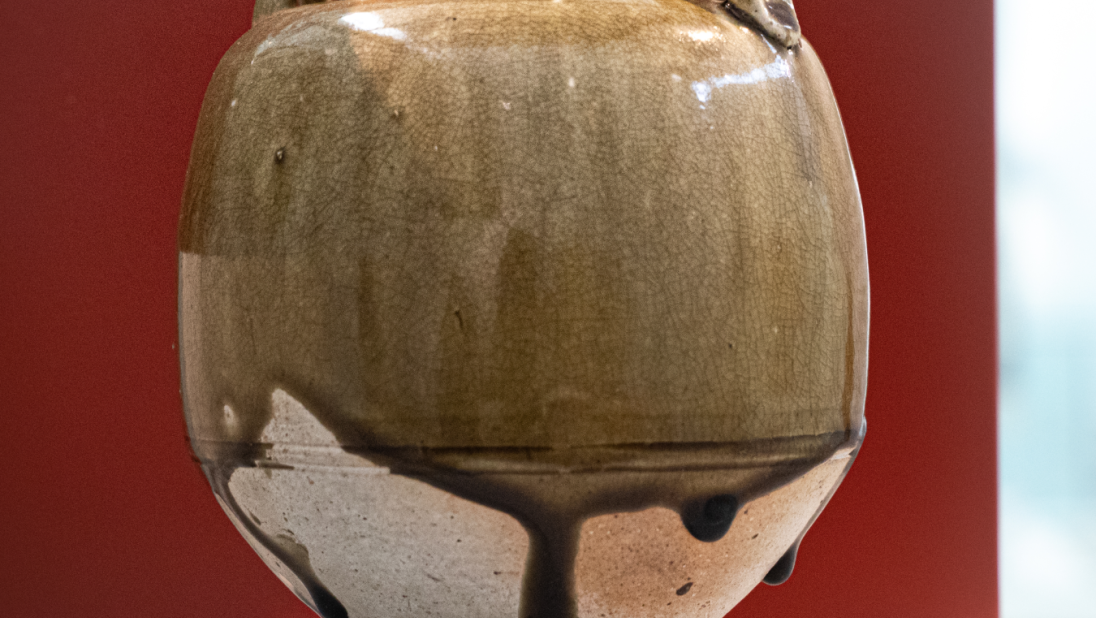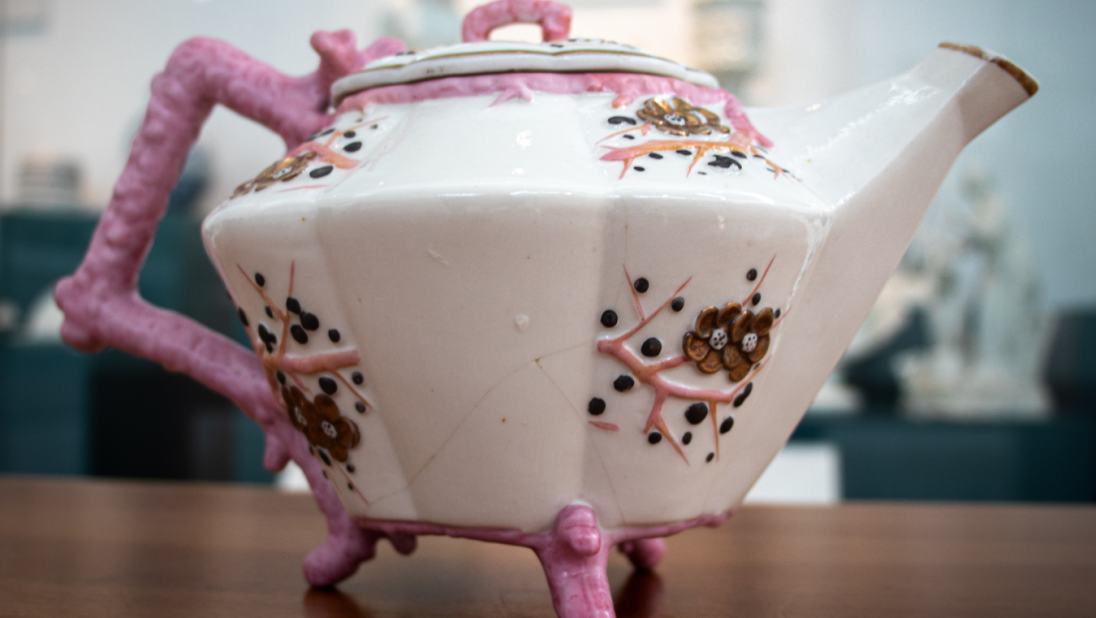Ceramics, Tea, and Global Histories
Explore how objects from our ceramics collection can be viewed through a more inclusive and global lens.
Chinese ceramics, in particular porcelain, have had a dominant impact on Western pottery and porcelain from the 16th century to the present day. The Dutch and English East India Companies brought vast cargoes of ceramics from China, which were traded in Europe and beyond. European heads of state were keen to make this ‘white gold’ for themselves and tasked their alchemists with the challenge.
It wasn’t until 1708 that Johann Friedrich Böttger discovered the secret ingredient that made the ceramics translucent, thus enabling him to establish the first porcelain factory at Meissen in 1710.
The influence of Chinese ceramics can be seen, not only in the adoption of Oriental-style decoration by European pottery and later porcelain factories, but also in the shapes, forms and glazes used by the Belleek Pottery (Fermanagh) in the 19th and 20th centuries.
Chinese and Belleek Ceramics
Tea and Global Histories
The Chinese have been drinking tea for thousands of years and, like porcelain, tea was one of the first new goods Dutch and English merchants brought back from their trips to the Far East at the beginning of the 17th century. The expense of tea at the time meant that it was only enjoyed by the very rich, who also added sugar to the bitter liquid.
Both the trade in tea and sugar have a dark history including wars, slavery and the drug trade. In later years and throughout the 19th century tea was mostly exported to the rest of the world from India, where vast tea plantations were established to fulfil the needs of the West. Slavery had been banned by 1833 but tea estate owners saw a way around this by getting free men and woman to sign binding contracts that effectively allowed the workers no rights and their conditions weren’t much better than for slaves.

